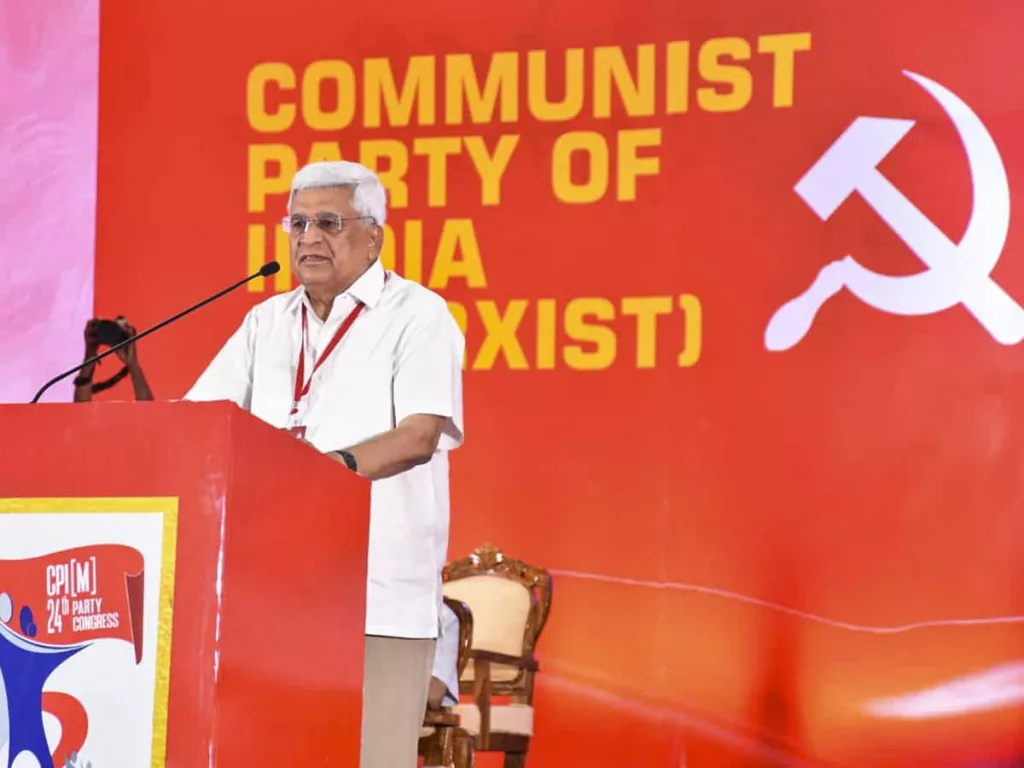Left seems all all set to fade away from the Indian political landscape by 2026, when its last bastion, Kerala, goes to polls. Perilously close to the BJP in Kerala, the CPM faces the prospect of Minorities moving away from the Left in Kerala, upsetting its electoral applecart. Earlier, the Left bastions to fall were West Bengal to the Trinamool Congress and Tripura to the BJP. If the last bastion of Kerala falls in 2026, then the Left may well be relegated to history.
Kerala seems to be going the BJP way, with Left losing its cadre and vote base to the BJP. By winning a straight second term in office in Kerala, the Left bucked decades-old trend of the Congress-led UDF and CPM-led LDF coming to power alternatively. But the results showed Hindu consolidation behind the Left, contributing to its record consecutive term in office.
Often, the Left and the Right are seen as political binaries, but CPM showed the way how the Left and Right can act in tandem.
Since its inception in 1964, CPM has been like the Socialists of Dr Ram Manohar Lohia and Acharya Narendra Dev brand, so fiercely Anti-Congress that it chose to make common cause with the Sangh Parivar. CPM, considered pro-China, broke away from CPI, considered pro-Russia, in 1964, in the wake of the Chinese aggression in 1962. While the CPI backed the Nehru Government in the face of Chinese aggression, the pro-China section broke, refusing to dub China as the aggressor, eventually leading to the split in 1964.
From 1964 onwards, till 2004, the CPM remained steadfastly with the Sangh Parivar; through thick and thin, including the Babri Masjid Demolition on December 6, 1992, besides the Gujarat communal carnage in 2002.
In 2004, when for the first time Left Front extended outside support to the Congress-led UPA Government at the Centre, the then BJP President M Venkaiah Naidu held a press conference, where he openly regretted CPM action. An emotional Venkaiah Naidu recalled the understanding between the Sangh Parivar and CPM was both emotional and ideological. CPM, recalled Venkaiah Naidu, had described Pandit Jawaharlal Nehru as the running dog of the imperialists. Opposition to Nehru is what is in common between the Sangh and the CPM.
In 1967, the CPM was with the Samyukth Vidhayak Dal (SVD),the RSS experiment in Coalition politics in 1967 at the States level and at the national level, as part of the Grand Alliance in 1971, when it failed and again in 1977, when it did succeed; and again with the BJP in 1989.
In fact, CPM leader Harkishan Singh Surjeet claimed credit for popping up V P Singh-led National Front Government at the Centre in 1989. Surjeet advised V P Singh to approach BJP as he cannot personally approach BJP, while assuring the Left Front, comprising CPM, CPI, Forward Bloc and RSP, would, along side BJP, support V P Singh.
In 1993 when the CPM Party Congress met in Chandigarh, in the wake of the Babri Masjid Demolition on December 6, 1992, Surjeet crossed the red line. At the media briefing, he said while equidistance from the BJP and the Congress was the stated policy, after the Babri Masjid Demolition, the CPM considered BJP as the bigger enemy.
There was uproar in the CPM, forcing Surjeet to call the media to instantly retract and to insist that equidistance from BJP and the Congress continues to remain as the party line and there was no change in that position.
During 2004 to 2008, there was a virtual war of attrition between Prakash Karat, who wanted break up with the Congress-led UPA and late Sitaram Yechury, who favoured the arrangement in special circumstances.
The India, US Civil Nuclear Cooperation Agreement provided the perfect setting for Prakash Karat to strike and force the ending of outside support to the Congress-led UPA Government at the Centre.
Sources indicate Prakash Karat taking the line to oppose the Congress, even if it meant supporting him (reference to BJP leader L K Advani). It only reinforced that all along the CPM preferred toeing in Sangh line, in order to oppose the Congress.
Prakash Karat writ runs in Kerala, which explains why the CPM has been playing the Hindu Card with schemes calculated to build bridges with the BJP. Recently, CPM organized the Global Ayyappa Summit.
The CPM drew up elaborate plans for Sabarimala. These included approval for the layout plan of Nilackal base camp of Sabarimala, in 2020. In January, 2025, Pinnarayi Vijayan Government approved layout plans for both the Sannidhanam and trek routes at Pampa.
During COVID-19 pandemic, when the daily functioning of the Devaswom Board was in distress, Pinarayi Vijayan Government provided Rs 140 crore financial aid, along with another Rs 123 crore for renovation works.
The CPM remained steadfast, while the CPI navigated its own way on quite a few occasions. In the wake of the Congress Split in 1969, the CPI, along with the DMK, stepped in to support Indira Gandhi Government. After the India, Soviet Treaty of Peace, Friendship and Cooperation signed on August 9, 1971, with CPI Chairman Shripad Amrit Dange at the helm, the party continued to support Indira Gandhi during Emergency. The CPM lost sight of Secularism, in its blind opposition to the Congress.
Get the latest updates in Hyderabad City News, Technology, Entertainment, Sports, Politics and Top Stories on WhatsApp & Telegram by subscribing to our channels. You can also download our app for Android and iOS.
